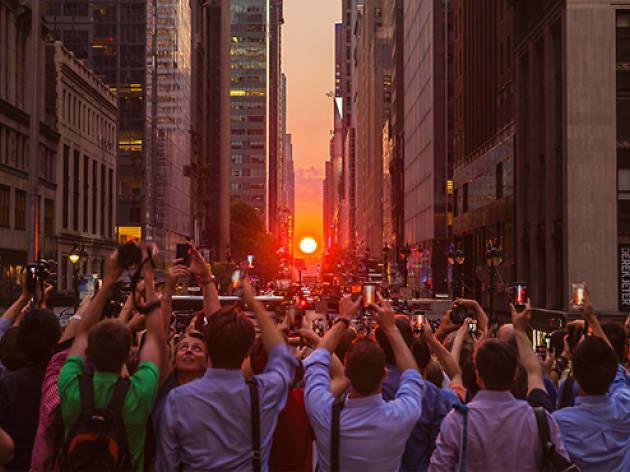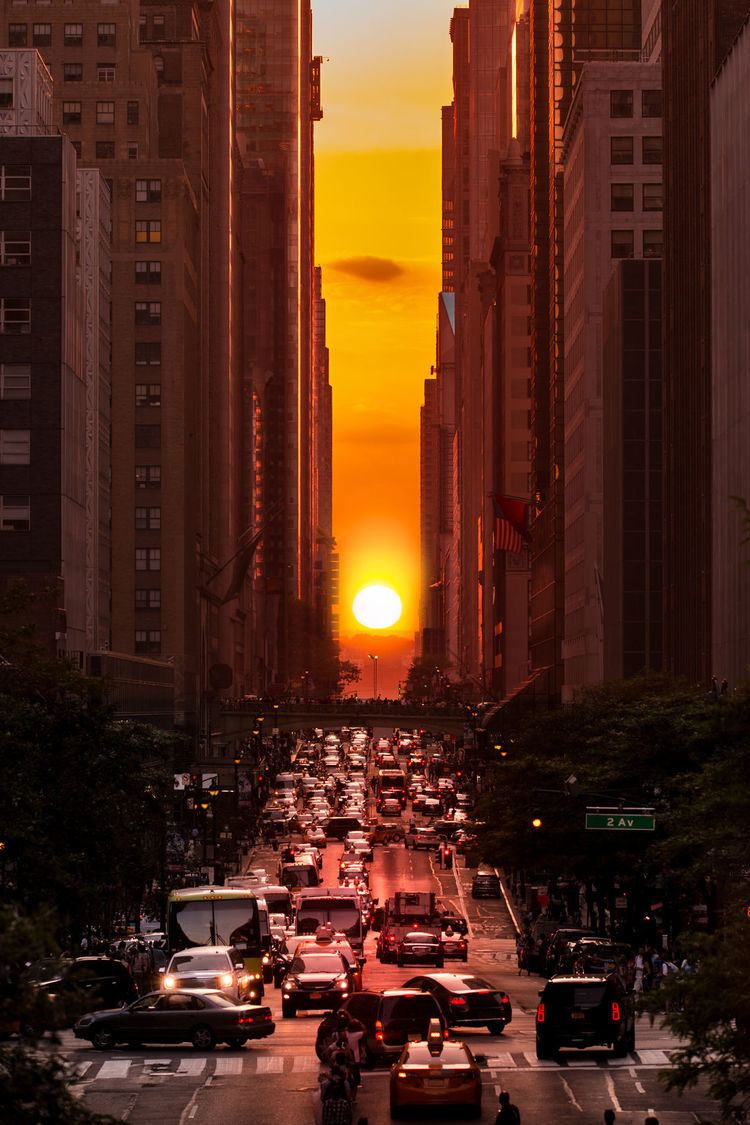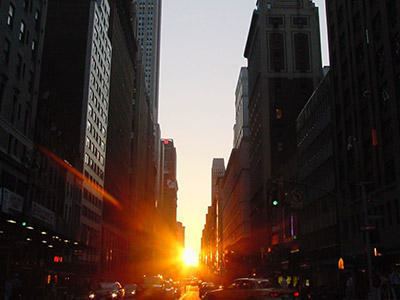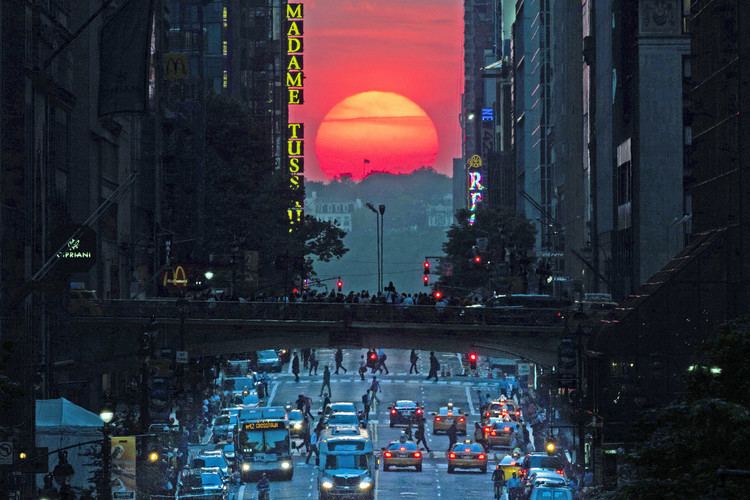 | ||
Does the sun always set in the west manhattanhenge helps with a brief explanation
Manhattanhenge — sometimes referred to as the Manhattan Solstice — is an event during which the setting sun is aligned with the east–west streets of the main street grid of Manhattan, New York City. This occurs twice a year, on dates evenly spaced around the summer solstice. The first Manhattanhenge occurs around May 28, while the second occurs around July 12.
Contents
- Does the sun always set in the west manhattanhenge helps with a brief explanation
- Explanation and details
- Occurrences
- Related phenomena in other cities
- In popular culture
- References

Explanation and details

The term "Manhattanhenge" was popularized by Neil deGrasse Tyson, an astrophysicist at the American Museum of Natural History and a native New Yorker. It is a reference to Stonehenge, a prehistoric monument located in Wiltshire, England, which was constructed so that the rising sun, seen from the center of the monument at the time of the summer solstice, aligns with the outer "Heel Stone".

In accordance with the Commissioners' Plan of 1811, the street grid for most of Manhattan is rotated 29° clockwise from true east-west. Thus, when the azimuth for sunset is 299° (i.e., 29° northward of due West), the sunset aligns with the streets on that grid. A more impressive visual spectacle, and the one commonly referred to as Manhattanhenge, occurs a couple of days after the first such date of the year, and a couple of days before the second date, when a pedestrian looking down the centerline of the street westward towards New Jersey can see the full solar disk slightly above the horizon and in between the profiles of the buildings. The date shifts are on account of sunset proper being the time the last of the sun disappears below the horizon.

The precise dates of Manhattanhenge depend on the date of the summer solstice, which varies from year to year but remains close to June 21. In 2014, the "full sun" Manhattanhenge occurred on May 30 at 8:18 p.m., and on July 11 at 8:24 p.m.
The event has attracted increasing attention in recent years.

The dates on which sunrise aligns with the streets on the Manhattan grid are evenly spaced around the winter solstice, and correspond approximately to December 5 and January 8.
Occurrences
In the following table, "full sun" refers to occurrences of the full solar disk just above the horizon, and "half sun" refers to occurrences of the solar disk partially hidden below the horizon.
Related phenomena in other cities
The same phenomenon happens in other cities with a uniform street grid and an unobstructed view of the horizon, with each instance depending on the city's grid plan, surrounding topography and flora (for instance, a city surrounded by hills, mountains or forestry would not experience the effect even if its streets were laid out perfectly). Such occurrences would coincide with the vernal and autumnal equinox only if the grid plan were laid out precisely north-south and east-west, and perfectly aligned with true north as opposed to magnetic north. The situation in Baltimore comes fairly close, with its sunrises on March 25 and September 18 and sunsets on March 12 and September 29. In Chicago, the setting sun lines up with the grid system on September 25 and March 20, a phenomenon known similarly as Chicagohenge. In Toronto, the setting sun lines up with the east–west streets on October 25 and February 16, a phenomenon known locally as Torontohenge. In Montreal, there may be a Montrealhenge each year on June 12. When the architects designing the centre of Milton Keynes in the UK discovered its main street almost framed the rising sun on Midsummer Day and setting sun on Midwinter Day, they consulted Greenwich Observatory to obtain the exact angle required at their latitude, and persuaded their engineers to shift the grid of roads a few degrees.
"MIThenge" is the twice-yearly event when the setting sun can be seen across the length of the "Infinite Corridor", in the central campus of the Massachusetts Institute of Technology (MIT), in Cambridge, Massachusetts. That event was first advertised in 1975, in a poster that included a drawing of Stonehenge.
